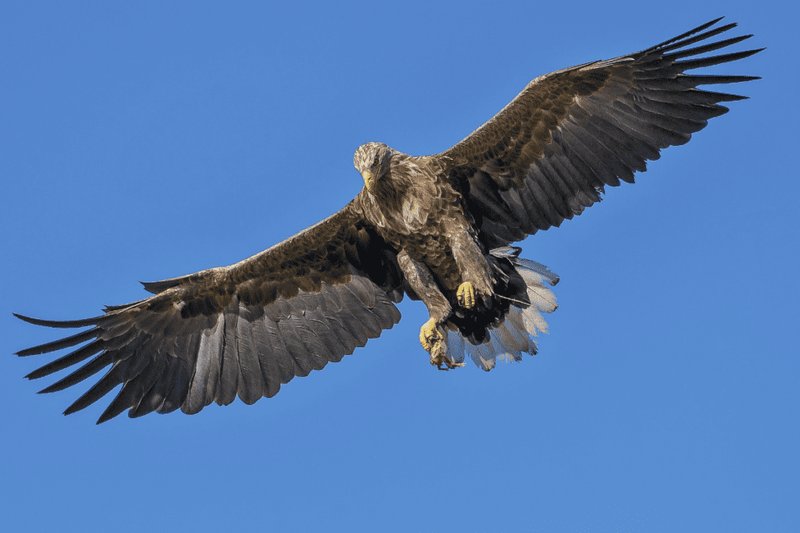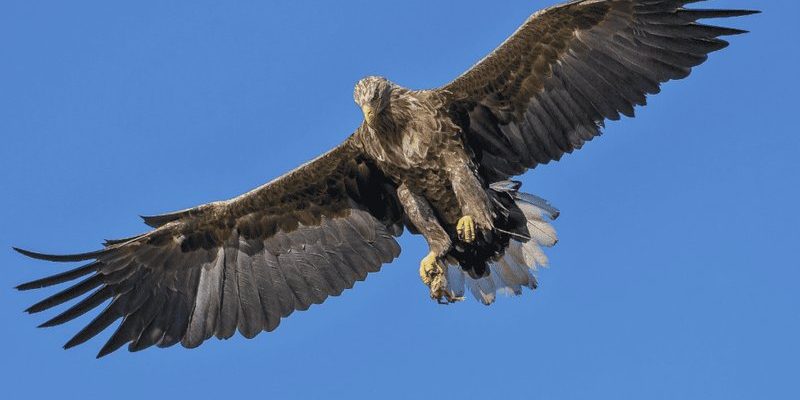
Now, there’s a lot to unpack here. From their exceptional eyesight to their powerful hunting strategies, eagles have some tricks up their sleeves that set them apart from other birds. Whether you’re a nature enthusiast or just curious about these birds of prey, you’ll find something awe-inspiring about their abilities. Ready? Let’s take flight!
The Anatomy of an Eagle’s Flight
To really appreciate how eagles fly, it’s important to understand their unique anatomy. Eagles possess broad, powerful wings that are designed for soaring rather than flapping. This gives them an edge when it comes to covering large distances while conserving energy. Their wings can span up to 7.5 feet, depending on the species. Just imagine that—you’d need a small room to hold those wings!
Another critical feature is their lightweight bones. Unlike humans, eagles have hollow bones which make them lighter and aid in flight. Their strong, muscular breast muscles provide the power needed for those impressive take-offs and quick maneuvers. And let’s not forget about their feathers. The primary feathers are specially adapted to handle wind currents, allowing them to glide for hours with minimal effort. Isn’t it amazing how nature works?
Soaring: The Eagle’s Signature Move
Eagles are champions of soaring. This technique involves using thermal updrafts—rising columns of warm air—to gain altitude with very little energy expenditure. Picture yourself floating effortlessly while riding a gentle breeze—that’s what soaring feels like for an eagle. They can reach impressive heights, sometimes over 10,000 feet, scanning the ground below for potential prey.
When soaring, eagles can cover large territories, which is crucial for finding food. Their keen eyesight is one of their greatest gifts. Eagles can spot prey from a mile away, thanks to their exceptional vision. Think about it—it’s like having superpowers! They rely on this combination of soaring and vision to hunt effectively, making them fearsome predators.
Fierce Hunting Techniques
Eagles employ a variety of hunting strategies that vary by species and environment. One of the most fascinating techniques is the stoop, which is a high-speed dive toward their prey. They can reach speeds of up to 100 miles per hour! Imagine the thrill of diving from great heights with pinpoint accuracy—that’s the adrenaline rush for an eagle!
During a stoop, an eagle will use its sharp talons to snatch prey right out of the water or off the ground. This requires not only speed but also incredible timing and agility. Their powerful legs and feet are equipped with sharp claws, which can grip their catch firmly, making escape nearly impossible for their victims.
Adaptability in Hunting
Eagles are also opportunistic hunters. Depending on their environment, they might change their hunting strategies. For example, coastal eagles often hunt fish, while forest-dwelling eagles might prefer small mammals or birds. They can even be scavengers, taking advantage of carrion when the opportunity arises.
This adaptability is a big reason why eagles can thrive in various habitats—from mountains to forests and coastlines. They know how to make the most of what their environment offers. Honestly, it’s quite impressive how these birds can switch up their game based on available resources.
The Role of Vision in Hunting
An eagle’s hunting success heavily relies on its remarkable eyesight. Their eyes can see ultraviolet light, which is invisible to humans. This gives them an advantage when locating prey that might be hidden among grass or foliage. It’s like having a special set of glasses that reveals what’s lurking just beneath the surface.
In fact, an eagle can see about 4 to 8 times better than humans. Their eyes are also positioned on the front of their heads, providing excellent depth perception. This combination means that when an eagle spots something moving, it can quickly calculate the distance and speed needed to swoop down and catch its meal flawlessly.
Tracking Prey: Patience and Precision
Eagles are known for their patience. Sometimes, they’ll perch high in a tree or on a rock to keep a lookout for prey. They can remain still for quite some time while scanning the ground below. This waiting game is crucial, as it can take minutes or even hours before they find the right moment to strike.
Once they identify their target, they launch into action. With a few powerful flaps of their wings, they can swoop down with incredible precision. Their hunting techniques are a blend of patience and explosive energy. It’s a balance that makes them not just great flyers but also highly skilled hunters.
Teamwork in Eagle Hunting
Did you know that not all eagle hunting is a solo sport? Some species, like the Bald Eagle, are known to hunt in pairs. This teamwork can enhance their hunting success. Imagine two eagles soaring high, working together to drive a group of fish into shallow water, making them easier to catch.
When hunting in pairs, one eagle might distract the prey while the other swoops in for the catch. This cooperative strategy shows how intelligent these birds are. They display a sense of communication and coordination that’s often overlooked in the animal kingdom.
Learning from the Masters
Young eagles learn these hunting techniques from their parents through observation. Watching their parents work in the wild helps young eagles develop their skills. They practice their flight and hunting techniques until they are ready to take on the world as adults.
It’s a rite of passage in the eagle world! This learning process emphasizes the importance of family and social structures in the wild, showcasing how knowledge and skills are passed down through generations.
Conservation of Eagle Species
Despite their majestic presence, many eagle species face threats due to habitat loss, pollution, and hunting. Conservation efforts are crucial to ensure these incredible birds continue to thrive in the wild. Organizations worldwide are working to protect their habitats and educate the public about the significance of eagles in our ecosystems.
By preserving their environments and implementing protective measures, we can help safeguard these fascinating aerial hunters for future generations. Supporting local conservation efforts can make a real difference in ensuring that eagles can continue to soar across our sky.
What You Can Do
As individuals, we can contribute to eagle conservation through simple actions. Whether it’s reducing plastic use, participating in local clean-up events, or supporting wildlife organizations, every little bit helps. Educating others about the importance of eagles and their habitats can also have a lasting impact.
By working together, we can ensure that eagles continue to inspire awe with their unique flying and hunting techniques.
In conclusion, eagles are remarkable creatures that showcase extraordinary flight and hunting abilities. From their soaring techniques to their sharp eyesight and adaptable hunting strategies, these birds are perfectly suited to their roles as predators. Understanding their skills not only deepens our appreciation for these majestic birds but also motivates us to protect them for years to come. Let’s celebrate the incredible world of eagles, and do what we can to preserve their legacy!

